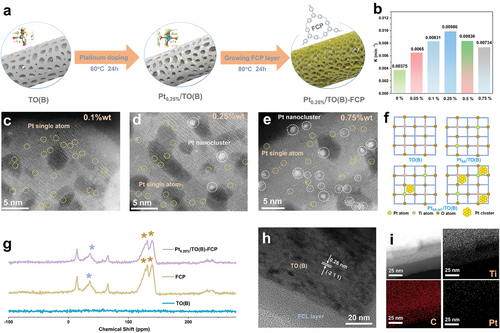Rapid Hole Transfer and Molecular Enrichment at Amorphous-Crystalline Interfaces of Pt0.25%/TO(B)-FCP for Efficient Photocatalysis
Qimeng Sun1, Xiaoyong Xia1, Weijie He1, Xiaofang Liu1, Dongyun Chen1, Hua Li1, Najun Li1, Huilong Dong2, Qingfeng Xu1(徐庆锋)*, Jianmei Lu1(路建美)*
1College of Chemistry, Chemical Engineering and Materials Science Collaborative Innovation Center of Suzhou Nano Science and Technology, Soochow University Suzhou 215123, P. R. China
2School of Materials Engineering Changshu Institute of Technology, Changshu, Jiangsu, 215500, P. R. China
Adv. Funct. Mater. 2025, 35, 2411942
Abstract: The construction of amorphous-crystalline interfaces of heterogeneous metal oxide systems is an effective approach to modulate the interfacial adsorption behavior and carrier transfer pathways for the photocatalytic process. In this work, the amorphous-crystalline interface is constructed by covalently linking a flexible crosslinked polymer (FCP) layer to a Pt0.25%/TO(B) substrate. Adsorption-photodegradation experiments show that Pt0.25%/TO(B)-FCP can ultimately enrich bisphenol A molecules to the interface within 5 min and in situ-photodegrade >97.0% of bisphenol A within 10 min (50 ppm), which is 6.21 times than pure TO(B). In addition to the efficient accumulation of BPA molecules, the rapid hole transfer pathway at the amorphous-crystalline interface is revealed by theoretical calculations, Kelvin probe force microscopy, and photoelectrochemical characterization. The coexistence of Pt single atoms (SAs) and nanoclusters (NCs) optimizes the transfer kinetics and reduces the energy barrier of photogenerated holes of TO(B). Meanwhile, the covalent hole transfer channels between the FCP layer and Pt0.25%/TO(B) significantly accelerate the separation and transfer of photogenerated carrier, promoting the photodegradation of adsorbed BPA molecules.

链接://onlinelibrary.wiley.com/doi/10.1002/adfm.202411942